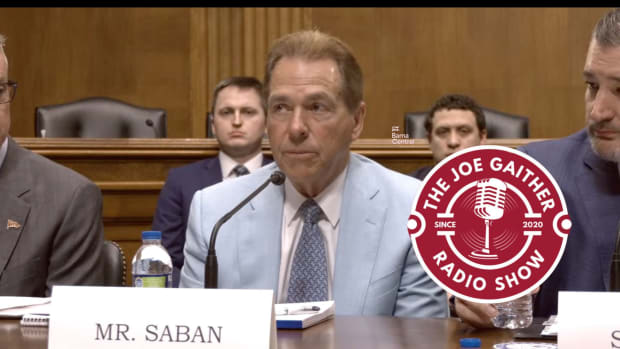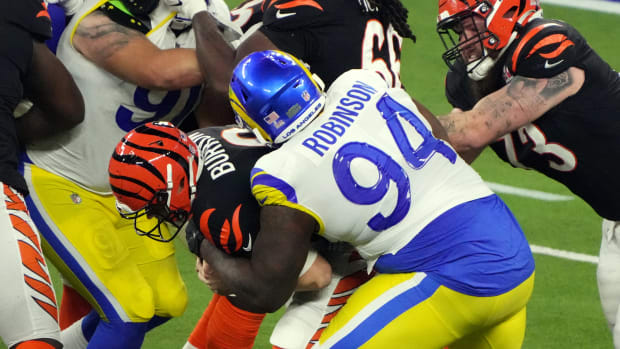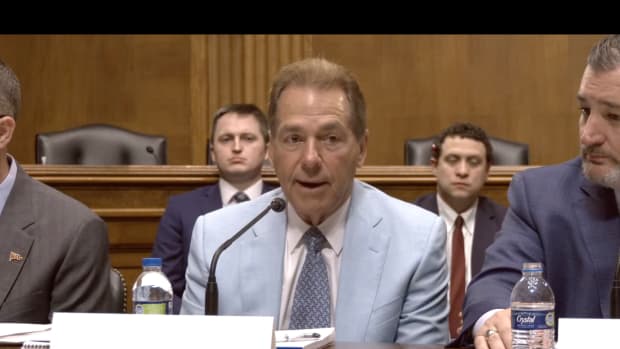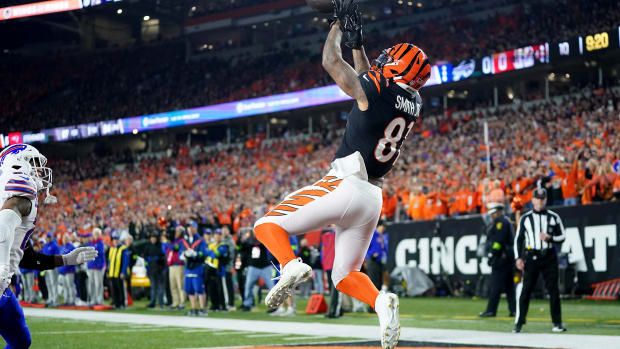Crimson Corner: The Wild West of NIL
It has been exactly a week since Name, Image and Likeness laws went into effect across multiple states and we're already starting to see what sort of Wild West frontier is shaping up across the landscape of college athletics.
While the majority of athletes thus far have signed small contracts (although details for the majority of them still have yet to be released), some athletes are set to make millions through one method in particular: social media.
Take Hanna and Haley Cavinder, for example. The sisters play basketball for Fresno State, but are more widely known for their Instagram and Tik Tok accounts. Between the two of them, they share roughly four million followers.
The pair have already signed two NIL contracts, one with Six Star Pro Nutrition and another with Boost Mobile. Combined, those deals would give each athlete money in the five-figure area.
But on social media? With their Instagram and Tik Tok accounts monetized, the pair could split roughly $3 million annually from those accounts.
LSU gymnast Olivia Dunn is set to be one of the highest-paid athletes in the nation. Once again, not through NIL contracts but through the monetization of her social media accounts.
Social media monetization has quickly become one of the biggest means of making money through NIL. However, not all athletes are able to make such staggering figures. Why is that? They do not have the exposure needed on a national stage if they play at a smaller college.
NIL is not to be used for recruiting purposes. Simply put, a prospective athlete can't walk into Mal Moore Athletic Facility on the campus of the University of Alabama while on a recruiting visit and be pitched NIL. An assistant coach can't tell an athlete 'If you come to a big school like ours, there's more opportunity for you to make money here than at those other smaller schools that are currently recruiting you.'
But let's be honest here: Does that really need to be said out loud?
So far, NIL being passed is yet another case of the rich getting richer and the poor, well, getting poorer. Large universities already had an upper hand in recruiting the nation's best athletes but now with NIL in place, those larger schools have an even greater advantage.
It's definitely no coincidence that Alabama athletics' NIL education program is called 'The Advantage.'
Don't get me wrong here. Athletes should absolutely be able to monetize their social media accounts and profit off of their NIL. For far too long have athletes been forced to stand by while their institutions rake in millions of dollars in profit from the sweat off of their athletes' backs.
However...
Shouldn't there be an NCAA-wide cap on what these athletes can make? I'm not saying this from the motivation of limiting athletes' income. I'm saying this so that the small schools will actually have a chance in recruiting talented athletes to their campuses. If there isn't a financial cap on how much money an athlete can bring in, then small athletics programs across the country will most likely be facing hard times ahead.
You might call me a naysayer or a skeptic. However, I believe I just choose to see the reality of the situation.
Overall, NIL is going to be a spectacular tool for athletes at the college level. However, if there isn't some form of wide-sweeping regulation passed in the next couple of years, the Wild West of college athletics is only going to continue to fall into chaos.




